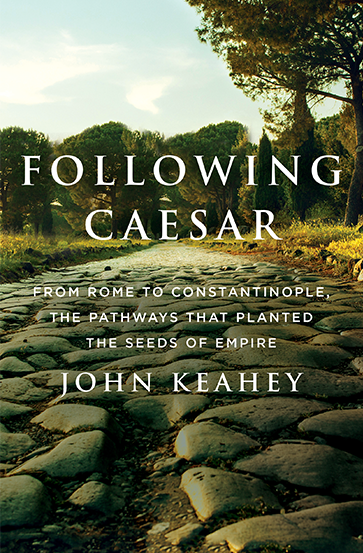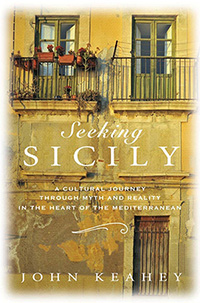Following Caesar: From Rome to Constantinople, the Pathways That Planted the Seeds of Empire

A travel narrative following three ancient roads and looking at more than two thousand years of the history of ancient Rome through the modern eye.
In 66 B.C., young, ambitious Julius Caesar, seeking recognition and authority, became the curator of the Via Appia. To curry favor with Roman citizens along the route, he borrowed significant sums to restore the ancient highway, built from Rome to Brindisi between 312-191 B.C. He succeeded and rapidly grew in popularity, eventually achieving greatness in Rome and the far reaches of Gaul. He led armies along this road and its sister road, the Via Egnatia, across the Balkans to battle enemies in Roman civil wars.
Other armies followed these two roads that eventually connected Rome to the then Greek city Byzantium, today’s Istanbul. Octavian, who became, in 27 B.C., Rome’s first emperor, Augustus, and his friend and later enemy Mark Antony traveled portions of both roads to defeat Caesar’s murderers Brutus and Cassius at Philippi in eastern Macedonia. The great Roman statesman Cicero, the Roman poet Homer, the historian Virgil and many other notables traveled along portions of one or both of these roads. In the early second century A.D., the emperor Trajan charted a new coastal route between Benevento and Brindisi, later called the Via Traiana.
The apostles Peter and Paul traversed portions of the Appia and Egnatia. Pilgrims, seeking salvation in far-away Jerusalem, followed in their footsteps as well. Modern folks, filled with a sense of history, still traverse segments that are preserved against the unpredictability of time – by car, sometimes on foot, on bicycle, or on the backs of horses and mules. And all the while the irrepressible shovels of archaeologists continue to uncover more.
Today, the remains of these roads can be seen in the ruins of ancient Roman cities, now preserved as archaeological wonders, and through the countryside near, and sometimes under, modern highways. Some ancient villages have disappeared. Others have grown into modern towns with the ancient roads hidden beneath latter-day pavements. Treading along the paths between Rome and Istanbul introduces the traveler to diverse peoples who are proud and protective of these segments of their heritages. It is a journey full of adventure, discovery, and friendship.
“This delightful travelogue from historian Keahey (Seeking Sicily) chronicles his three-month journey to walk the very stones Julius Caesar did some 2,000 years ago. While traversing the routes of the Via Appia and the Via Traiana in Italy and the Via Egnatia across the Balkans, Keahey ruminates on the integral role played in Roman and European history by these roads, sections of which underlie modern highways today, and traces the paths of famous figures who traveled them, including the poet Horace and the apostles Peter and Paul. Throughout, Keahey highlights the impact these roads had on Caesar’s political career. In 66 BCE, a young Caesar became curator of the Via Appia, which stretched from Rome to Brindisi in southern Italy. Spending his own fortune on improvements and repairs, Caesar gained favor with villages along the route, paving the way for his first electoral victory. He later achieved acclaim leading armies along the route to fight Rome’s civil wars. As Keahey seeks out the remaining stretches of the original roadways, he charmingly recounts being assisted by archeologists, historians, and knowledgeable locals; on one memorable occasion, he’s driven through the mud of a farmer’s field to be shown a yet unmapped portion of the Via Appia. This winsome and deeply researched account will spellbind readers. (Dec.)”
Publishers Weekly





